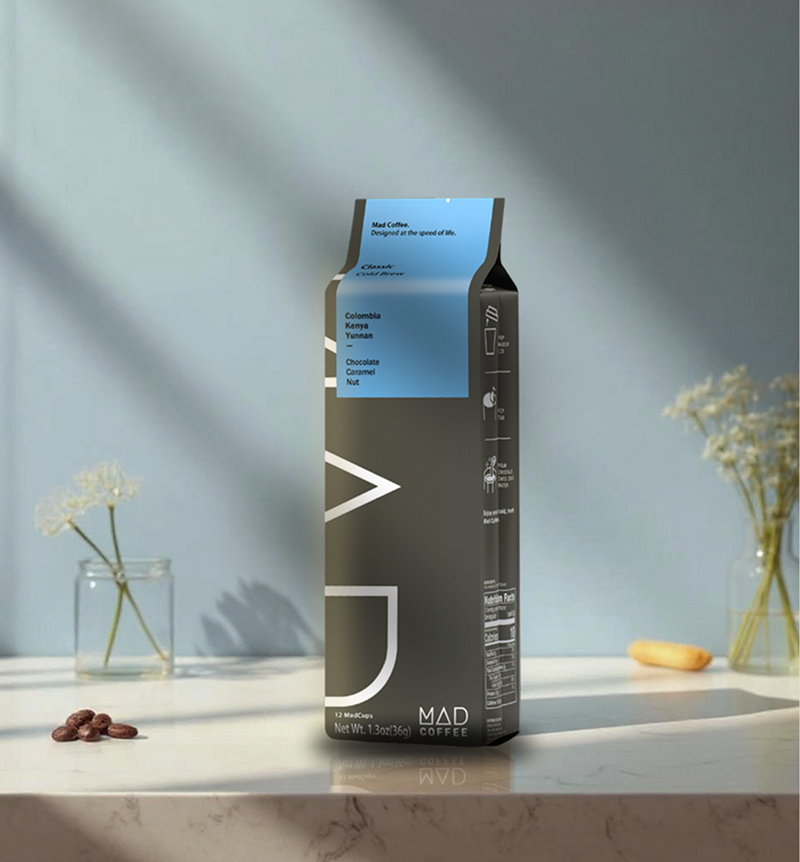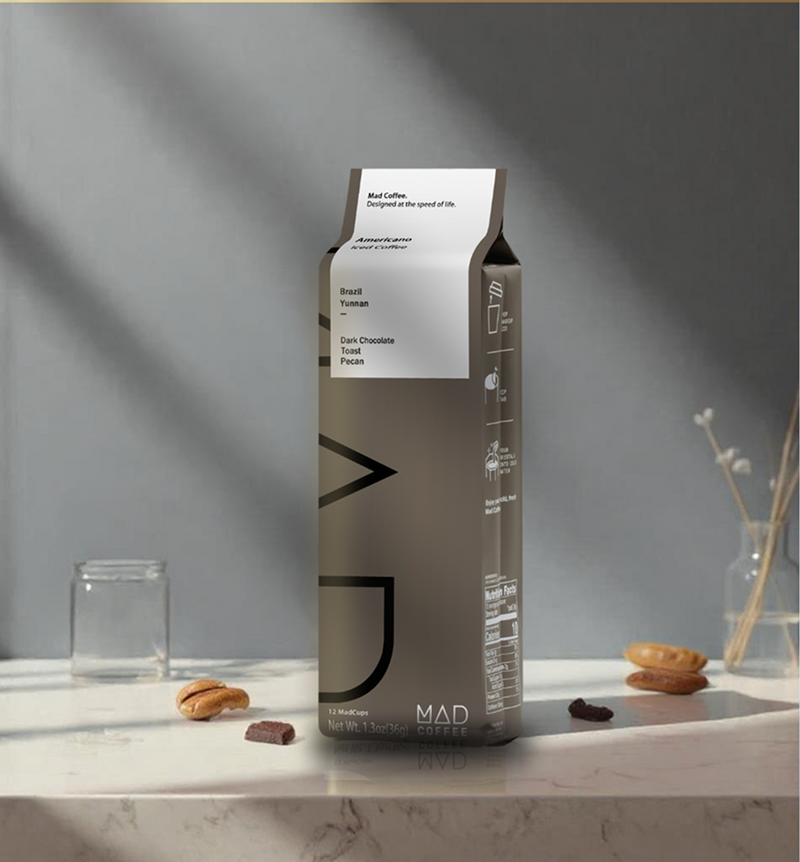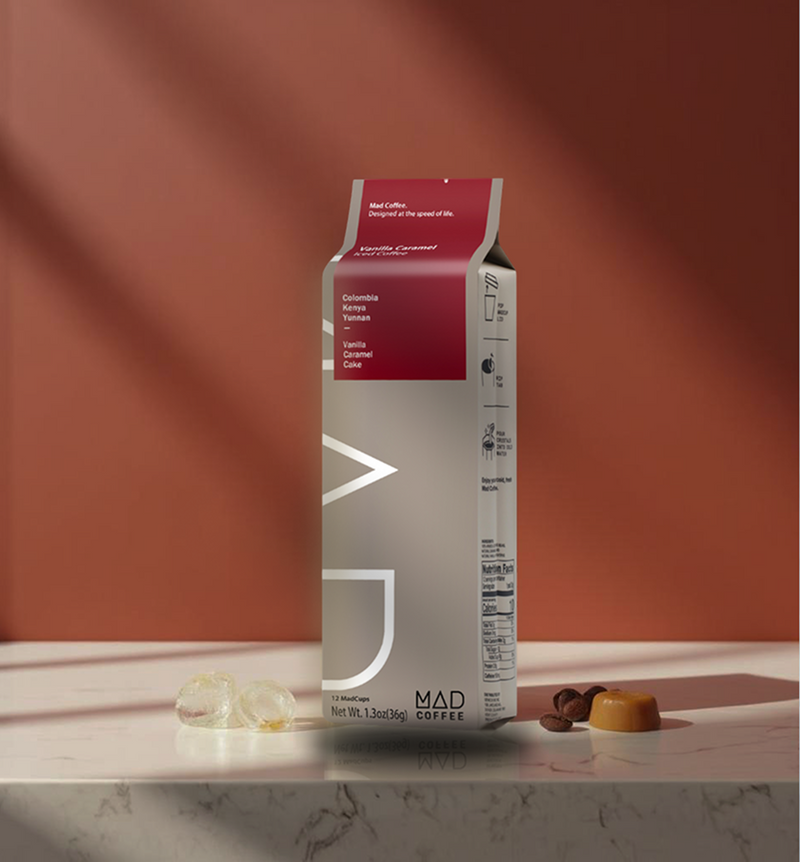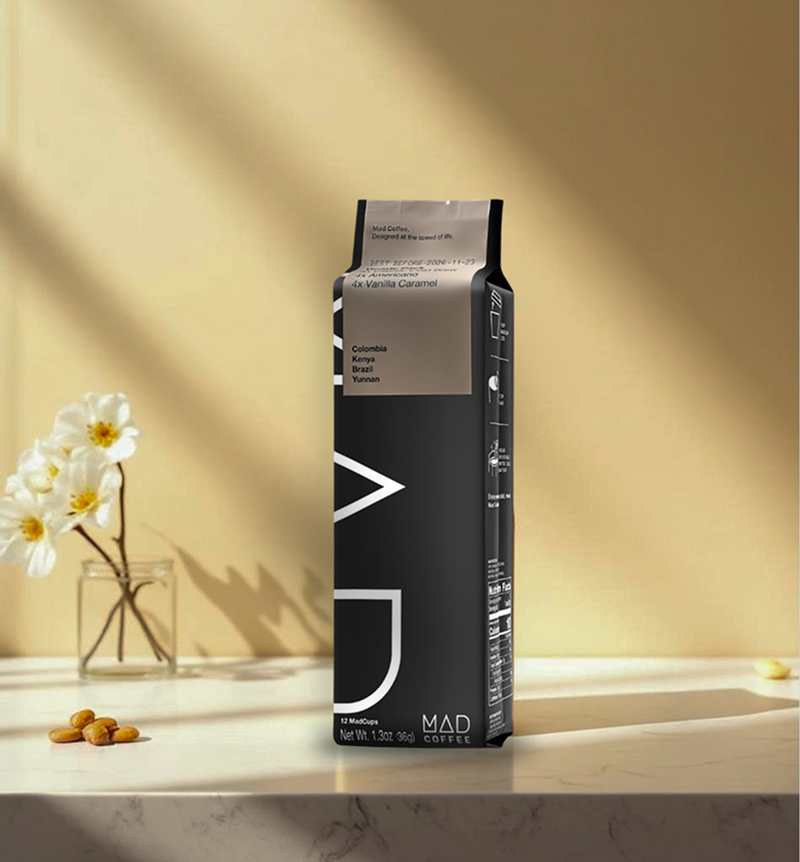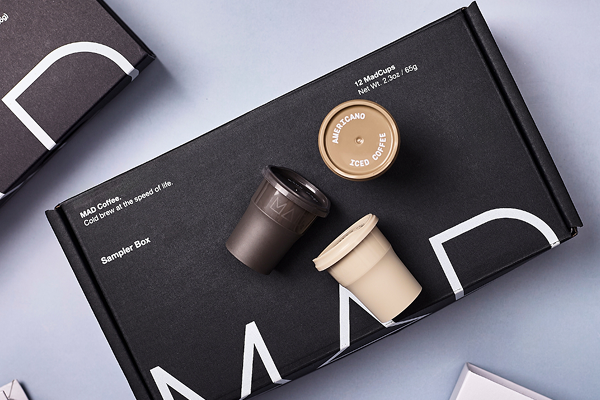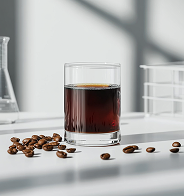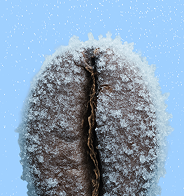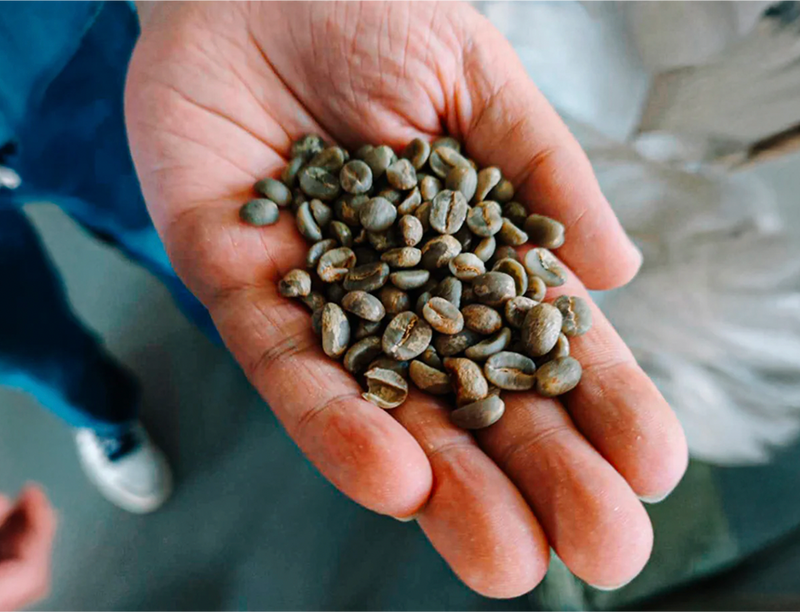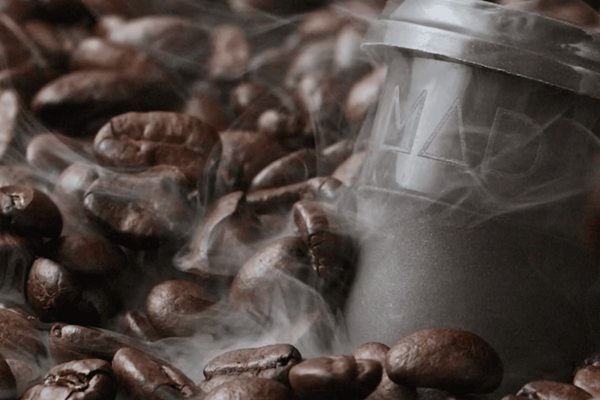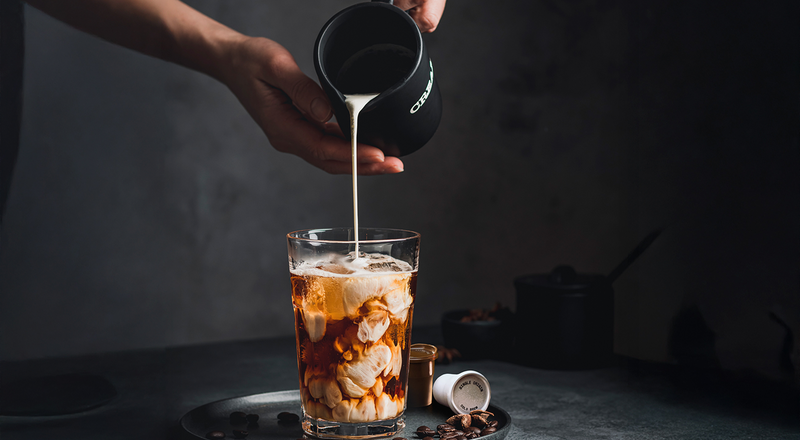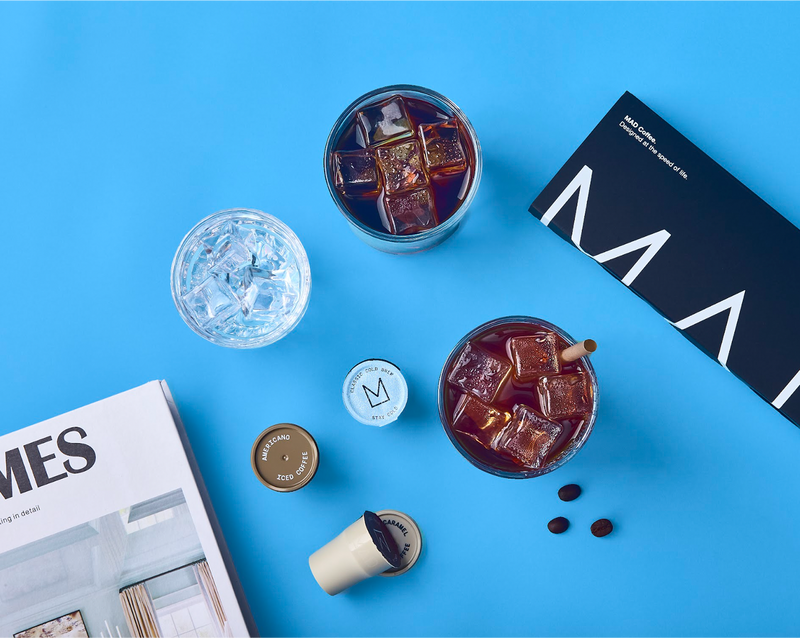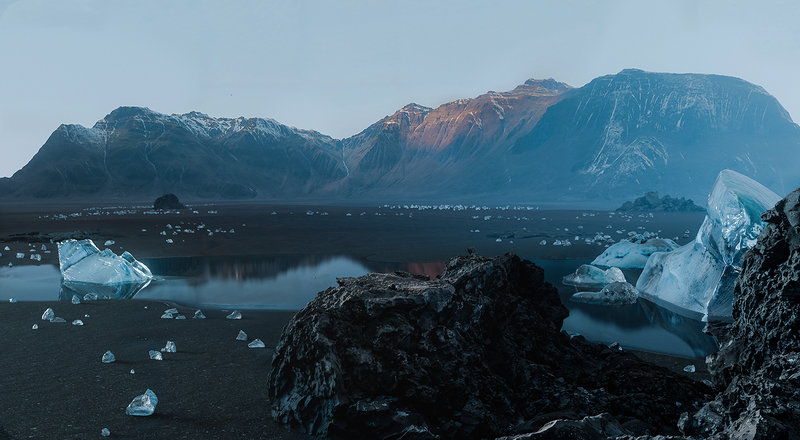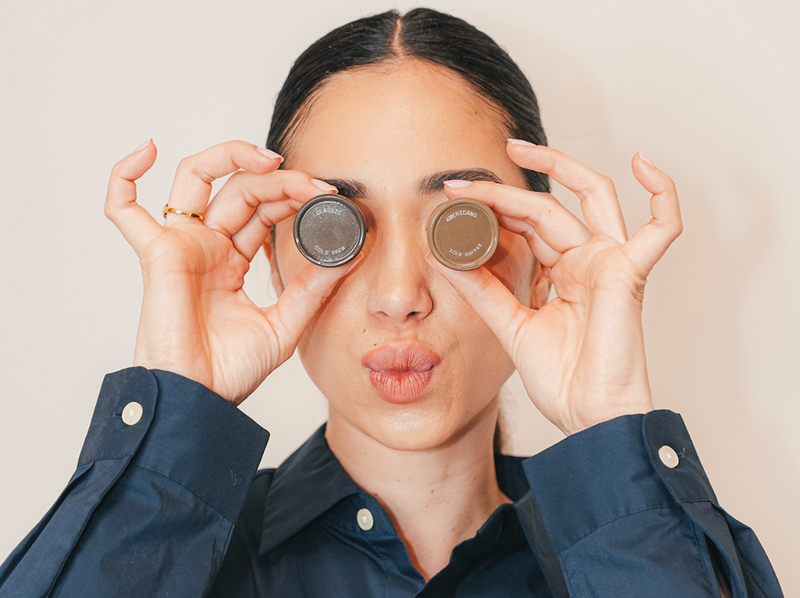Iced Coffee vs. Cold Brew: What's the Difference?
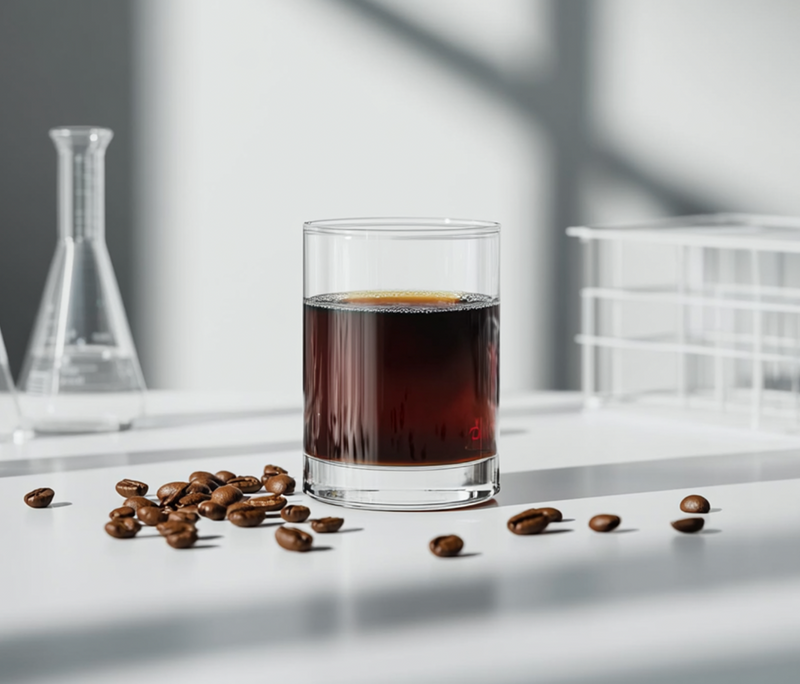
Is There A Difference Between Cold Brew and Iced Coffee?
Cold brew and iced coffee might look like twins in your cup, but they’re not even close. One’s smooth and slow. The other’s quick and bright. Different prep, different flavor, different energy–literally.
And if you’re wondering whether there’s a difference between cold brew and iced coffee and which one’s worth your time–don’t worry, we’re here to help!
As such, what exactly is the difference between cold brew and iced coffee? Let’s find out!
Key Points
-
Cold brew is steeped in cold water for 12–24 hours and has a smooth, less acidic taste. Iced coffee is brewed hot and then chilled, thus having a brighter, more acidic profile.
-
Cold brew typically has more caffeine (especially undiluted) and is often enjoyed black or with milk. Iced coffee is more commonly customized with milk, cream, and flavorings.
-
Choosing the right roast level, grind size, and brewing method is key to achieving the best flavor in either drink. Cold brew is best prepared with coarse grounds and long steep times, while iced coffee requires stronger hot brews to offset dilution.
What Is Cold Brew?
Cold brew is a cold coffee type prepared through a process called steeping. During this process, coffee grounds are steeped in cold, filtered water in a covered container for approximately 12-24 hours. Afterwards, the coffee grounds are filtered out of the water with a paper coffee filter or a fine metal sieve if a French press is used.
This slow extraction results in a smoother, less acidic, and naturally sweeter coffee concentrate (spoiler alert: it’s worth the wait!). It can be served over ice, diluted with water or milk, or even enjoyed hot.
The cold brew history takes us back to the 1600s in Japan. At the time, the Japanese had already been using the cold brew method to prepare tea. However, cold brew coffee was introduced to Japan by Dutch traders. They likely used this method to transport coffee without the need for fire, which was risky on ships.
Soon after the Dutch had introduced their concentrate to Japan, locals started developing their own brewing methods. This is how they invented the famous Kyoto-style cold brew coffee. It is also known as the Japanese slow drip, given that its preparation implies using an hourglass-shaped brewer that allows ice water to slowly drip through a bed of coffee grounds.
Over time, variations of cold brew appeared in other parts of the world. Its popularity surged globally in the 21st century.
What Is Iced Coffee?
Iced coffee consists of hot brewed coffee that undergoes a cooling process. It is served over ice cubes. Iced coffee is usually combined with sugar, syrups, milk, or cream for a touch of sweetness.
You can make iced coffee using a variety of brewing methods, including drip, French press, or espresso. The coffee used in regular iced coffees is usually brewed at a higher strength to account for dilution from melting ice.
It is believed that the original iced coffee is Mazagran. This is a cold, sweetened beverage developed around 1840 in Algeria that was sometimes mixed with lemon, mint, or rum.
Over time, iced coffee spread internationally, its popularity increasing at the beginning of the 20th century, and each country developed its own variations.
Cold Brew vs Iced Coffee: Key Differences
The main difference between cold brew and iced coffee is the preparation method: cold brew is prepared through a process called steeping that takes roughly 12-24 hours, while iced coffee is prepared within minutes by brewing a hot cup of coffee that is then cooled over ice.
Here’s a breakdown of the key differences between cold brew and iced coffee:
|
Feature |
Cold Brew Coffee |
Iced Coffee |
|
Brewing Method |
Steeped in cold or room-temperature water |
Brewed hot (drip, French press, espresso), then cooled over ice |
|
Preparation Time |
12–24 hours |
Minutes |
|
Flavor Profile |
Smoother, less acidic cup, naturally sweeter |
More acidic, retains more aromatic compounds |
|
Caffeine Content |
Higher (when undiluted) |
Moderate, depends on brew strength |
|
Customization |
Commonly served black or with milk; less often with syrups/flavorings |
Frequently customized with milk, cream, syrups, or ice cream |
|
Equipment |
Cold brew coffee makers or simply a sealable vessel that can be kept in the fridge overnight |
Standard coffee makers, espresso machines, or French press |
|
How long it lasts |
Up to seven days, sometimes even up to two weeks |
Up to three days |
Brewing Method and Preparation Time
Cold brew coffee is made by steeping coarsely ground coffee in cold or room-temperature water for an extended period, typically 12 to 24 hours. It’s a slow, hands-off process that requires a bit of planning, more “meal prep” than just “grab and go.” But the reward is a smooth, mellow coffee with its own personality.
In contrast, regular iced coffee is brewed hot by using conventional methods (like drip, French press, or espresso) and then cooled down by pouring over ice or refrigerating. It’s fast and convenient, great for when you don’t really have time to prepare a cold brew.
Flavor Profile and Caffeine Content
Cold brew’s extended steeping in cold water extracts different compounds from the coffee grounds compared to hot brewing. The result is a smoother, less acidic, and naturally sweeter beverage. Because cold brew is often made as a concentrate, it can also have a higher caffeine content per ounce, especially if you skip the dilution (not recommended before bedtime though!)..
Iced coffee, on the other hand, tends to have a brighter, more acidic taste. Because it’s brewed hot, flavor extraction is a bit more aggressive: think more vibrant , bolder notes.The caffeine content in traditional iced coffee is generally moderate and depends on how strong the coffee is initially brewed.
Dilution and Customization
Both beverages can be served over ice, but dilution is handled differently.
Cold brew is often intentionally diluted with water, milk, or a milk alternative to reach the desired strength and creaminess. Conversely, typical iced coffee is brewed at a higher strength to compensate for the dilution that occurs as the ice melts.
Furthermore, iced coffee is frequently combined with milk, cream, syrups, or even ice cream (hello, affogato!). Cold brew is usually enjoyed black or with milk, thus less commonly with additional flavorings. However, there’s definitely no rule against dressing it up.
Equipment needed
Whether you want to make cold brew or iced coffee, it’s important to use the right equipment.
For cold brew, you’ll need:
-
A large jar or pitcher for steeping coffee grounds in water for 12 to 24 hours.
-
A coffee grinder (preferably a burr grinder) to achieve a consistent coarse grind. This prevents over-extraction and bitterness, which can happen if the grounds are too fine.
-
A fine mesh sieve or paper filter to strain out the grounds after brewing.
-
Optional cold brew makers (like Toddy or Hario) with built-in filters or slow-drip mechanisms, which simplify the process.
For iced coffee, the process is more familiar and requires less specialized equipment.
-
A standard coffee maker, such as a drip machine, French press, or an espresso machine, can be used, depending on your preference.
-
Ice cube trays are helpful to ensure you always have plenty of fresh ice on hand.
-
A pitcher or carafe is useful for chilling brewed coffee before serving, especially if you want to make a larger batch ahead of time.
-
A cocktail shaker is optional but can be used for mixing iced lattes, frappés, or other specialty iced coffee drinks, giving them a frothy texture.
How to Choose Coffee Beans?
Whether you’re preparing cold brew or iced coffee, the secret to achieving a flavorsome drink lies in choosing the right coffee beans. You need to take into consideration the roast level, grind size, and freshness. Here’s why:
-
Roast level: medium to dark roasts are favored for cold brew because they yield a smooth, chocolatey, and less acidic cup. These roasts also work well for iced coffee, providing a rich base that stands up to dilution. Light roasts can be used for a brighter, fruitier flavor, but may result in a more acidic drink.
-
Grind size: for cold brew, a coarse grind is essential to prevent over-extraction and bitterness. For iced coffee, the grind size should match your brewing method—medium for drip, coarse for French press, and fine for espresso.
-
Freshness: always use freshly roasted beans for the best coffee flavor and aroma. Coffee loses its freshness quickly after roasting, so it’s best to buy in small batches and grind just before the brewing process.
Coffee Bean Sourcing and Quality
Where your coffee beans come from and how they are sourced can greatly influence the taste of your coffee. Therefore, it is important to pay attention to origin and quality when choosing, so you can find the option that suits your preferences and values. Here are some things to consider in this regard:
-
Origin. Beans from different regions, such as Ethiopia, Colombia, or Brazil, offer unique flavor profiles. For example, Ethiopian coffees often have fruity and flowery characteristics, Colombian beans are balanced and sweet, and Brazilian beans are known for their nutty, chocolatey notes. Single-origin beans highlight these regional characteristics, while blends offer a more balanced and consistent coffee flavor.
-
Ethical sourcing. Look for certifications such as Fair Trade or Rainforest Alliance. These labels indicate that the coffee was produced with attention to fair labor practices and environmental sustainability.
-
Quality grade. Specialty-grade beans are generally higher quality, with fewer defects and more distinct flavors. If you purchase from reputable roasters or specialty coffee shops, you’ll be getting beans that have been carefully selected and roasted.
Coffee Type and Classification
Here’s what you need to know about different coffee types:
-
Arabica vs. Robusta: Arabica beans are generally smoother. They have more nuanced flavors and less bitterness. Arabica beans are considered superior to Robusta and perfect for both cold brew and iced coffee. Robusta beans have a stronger, more bitter taste. They have higher caffeine content. Robusta beans also produce a denser creamy layer on top of an espresso shot than Arabica beans.
-
Specialty vs. commercial: specialty coffee is graded for quality and flavor, often featuring unique tasting notes and higher standards for sourcing and roasting. Commercial coffee is typically blended and roasted for consistency and affordability, but may lack the complexity and quality of specialty beans.
Coffee Flavors
Coffee isn’t just strong or bitter. Coffee beans have different flavors, including chocolate, caramel, nutty, fruity, floral, or spicy notes. These flavors are influenced by the origin of the coffee beans, the processing method, and the roast level.
Given that dark roast is preferred for cold brew, this coffee type typically has chocolatey and nutty notes. On the other hand, iced coffee is usually prepared with a light roast, which has notes of fruit, floral, and citrus.
Tips for Preparing Cold Brew and Iced Coffee at Home
If you want to prepare the best cold brew at home, consider the following tips:
-
Coffee-to-water ratio: a typical cold brew coffee is prepared with a 1:5 ratio—1 part coarsely ground coffee to 5 parts cold or room-temperature water. For example, use 1 cup of coffee grounds to 5 cups of water. This creates a strong concentrate that can later be diluted to taste. However, some recipes require a 1:8 or even 1:15 ratio.
-
Steeping time: let the mixture steep in the refrigerator or at room temperature for 12–24 hours. Longer steeping generally results in a richer, more robust flavor.
-
Filtering: after steeping ground coffee, strain the mixture through a fine mesh sieve, cheesecloth, or a paper coffee filter to remove the grounds.
-
Serving and dilution: cold brew concentrate is typically too strong to drink straight. Dilute it with water, milk, or a milk alternative. A common ratio is 1:2—1 part concentrate and two parts water or milk. Adjust to your preference for strength and creaminess.
If you want to prepare ice coffee, consider the following tips:
-
Brew strength: brew the coffee hot at double strength to compensate for dilution from melting ice.
-
Cooling: let the hot coffee cool slightly before pouring over ice to prevent excessive melting and dilution. Alternatively, brew directly over ice using the Japanese iced coffee method for a brighter flavor.
-
Customization: add milk, cream, or plant-based alternatives to taste. Sweeten while the coffee is still warm for better dissolution.
-
Ratios: a typical iced coffee is about 2/3 coffee to 1/3 milk or milk alternative, but you can adjust this based on your taste. For a creamier drink, add more milk; for a stronger coffee flavor, add less.
Mad Coffee Makes it Easy
Love the taste of cold brew or iced coffee but not the preparation hassle? We get it.With Mad Coffee, it’s cold brew time whenever you say it’s cold brew time. We offer a unique coffee experience: no steeping, filtering, or measuring required, just premium coffees that fit in your pocket! Here’s how you can enjoy your 3-second coffee break:
-
Pour 7-10 oz of cold or hot water into a glass.
-
Pop the lid of a MadCup.
-
Rip the tab.
-
Slowly pour the coffee crystals into the water.
-
Stir or shake.
Amazing how much free time fits inside a tiny cup, isn’t it? And the coffee still tastes like it was made by someone wearing a beret!
Moreover, our 100% compostable, eco-friendly MadCups are made of Arabica coffee that is brewed fresh and flash-crystallized with our proprietary LyoExtract™ tech, being cryogenically frozen to preserve flavor. Our coffee contains no additives or fillers, is free of microplastics, has been lab-tested for purity, and is Direct Trade sourced.
Ultimately, at Mad Coffee, we bring innovation and sustainability advancements to the coffee world, providing coffee enthusiasts with Arabica beans selected directly from legacy family farms around the world!
We lab-test for purity. We Direct Trade for transparency. We innovate sustainably, because good coffee shouldn’t come at the planet’s expense!
FAQs
Is cold brew stronger than iced coffee?
Cold brew is typically stronger than iced coffee because it is brewed as a concentrate and often contains more caffeine per ounce, especially if not heavily diluted.
Are you supposed to put milk in cold brew?
You don’t have to put milk in cold brew, but many people enjoy adding milk or a milk alternative to cold brew to mellow its strong, smooth flavor. It’s entirely a matter of personal preference.
Is Starbucks cold brew different from iced coffee?
Yes, Starbucks cold brew is different from iced coffee because it is made by steeping coarsely ground coffee in cold water for many hours, resulting in a smoother, less acidic drink, while their iced coffee is brewed hot and then chilled, giving it a brighter, more acidic taste.
Is there more caffeine in iced coffee or cold brew?
Cold brew generally contains more caffeine than iced coffee, but the exact amount can vary depending on how each is prepared and diluted.
Do cold brew and iced coffee taste differently?
Yes, cold brew and iced coffee taste differently. Cold brew has a smooth taste and lower acidity, while iced coffee has a more acidic and bitter taste.
